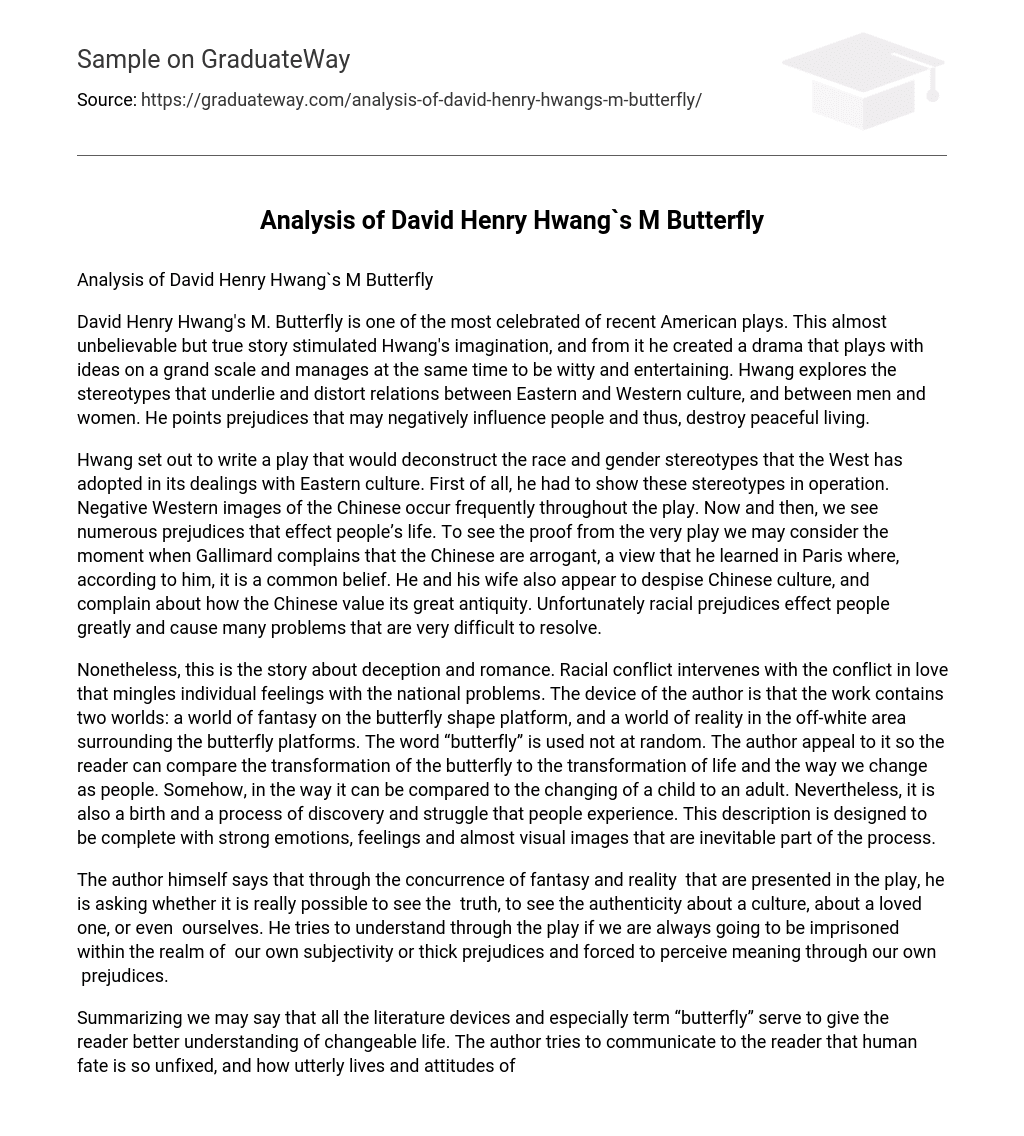David Henry Hwang’s M. Butterfly is one of the most celebrated of recent American plays. This almost unbelievable but true story stimulated Hwang’s imagination, and from it he created a drama that plays with ideas on a grand scale and manages at the same time to be witty and entertaining. Hwang explores the stereotypes that underlie and distort relations between Eastern and Western culture, and between men and women. He points prejudices that may negatively influence people and thus, destroy peaceful living.
Hwang set out to write a play that would deconstruct the race and gender stereotypes that the West has adopted in its dealings with Eastern culture. First of all, he had to show these stereotypes in operation. Negative Western images of the Chinese occur frequently throughout the play. Now and then, we see numerous prejudices that effect people’s life. To see the proof from the very play we may consider the moment when Gallimard complains that the Chinese are arrogant, a view that he learned in Paris where, according to him, it is a common belief. He and his wife also appear to despise Chinese culture, and complain about how the Chinese value its great antiquity. Unfortunately racial prejudices effect people greatly and cause many problems that are very difficult to resolve.
Nonetheless, this is the story about deception and romance. Racial conflict intervenes with the conflict in love that mingles individual feelings with the national problems. The device of the author is that the work contains two worlds: a world of fantasy on the butterfly shape platform, and a world of reality in the off-white area surrounding the butterfly platforms. The word “butterfly” is used not at random. The author appeal to it so the reader can compare the transformation of the butterfly to the transformation of life and the way we change as people. Somehow, in the way it can be compared to the changing of a child to an adult. Nevertheless, it is also a birth and a process of discovery and struggle that people experience. This description is designed to be complete with strong emotions, feelings and almost visual images that are inevitable part of the process.
The author himself says that through the concurrence of fantasy and reality that are presented in the play, he is asking whether it is really possible to see the truth, to see the authenticity about a culture, about a loved one, or even ourselves. He tries to understand through the play if we are always going to be imprisoned within the realm of our own subjectivity or thick prejudices and forced to perceive meaning through our own prejudices.
Summarizing we may say that all the literature devices and especially term “butterfly” serve to give the reader better understanding of changeable life. The author tries to communicate to the reader that human fate is so unfixed, and how utterly lives and attitudes of main personages (either of French Diplomat or of his beloved) change.
We may say for sure that Hwang hit the big time with “M. Butterfly,” regarding it also as elaborate spectacle of gender confusion and misconceptions about the Asian female in the European mind. David Henry Hwang’s M. Butterfly also reminds us of the varied ways American drama confront with imagination and spirit some of the more vexed political and social issues of our day.





